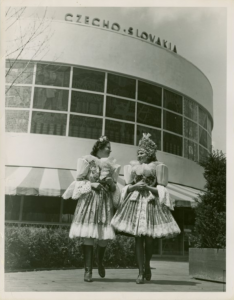 Institut national d’histoire de l’art, Paris, Apr 4–05, 2022
Institut national d’histoire de l’art, Paris, Apr 4–05, 2022
Deadline: Nov 14, 2021
It is widely recognised that new political entities that came to existence as nation states from the end of the 19th century sought to legitimise their identities externally through participation at world’s fairs and internally through consolidation of their national collections in museums and galleries of art and design. While the official motivations and presentations have been examined quite thoroughly, the agency of many individuals involved in different stages of exhibition design has been overlooked.
This symposium aims to explore the relations – including discrepancies – between the official narratives of exhibitions, as devised by the organisers, and the narratives by individuals whose participation helped to construct the meaning and content of the exhibits. By this, the discussion moves away from the focus on the state apparatus and official ideologies towards the people who designed the national presentations, worked in them and visited them. Our main focus is on how exhibitions were used to consolidate new political identities. The period covered by the symposium begins with the Vienna World Fair of 1873 and concludes with the outbreak of the Second World War. It saw important changes in political and geographical circumstances globally, with the creation and recreation of, for instance, Romania, Turkey, Egypt, Czechoslovakia, Austria and Hungary.
The symposium explores three types of involvements in exhibitions by 1. creative individuals (including architects, designers, curators and artists), 2. visitors (including journalists and group visits), and 3. the employees (including custodians, waiters, hostesses and performers). We invite papers that place their agency at exhibitions into the context of exhibition history and critically reflect on their relationship to the official narrative. While the main focus is on central Europe, we welcome contributions that examine other examples of modern nations created or reconstituted during this period. Studies can be comparative and historical analyses which take into account the questions of gender, class and race and approach the subject through for example art history, psychology, ethnography, gender studies or anthropology.
Questions to consider include:
– To what extent were the original visions of displays in national pavilions, museums and galleries successfully executed?
– How did the role of the creative practitioners and their involvement in the construction of the exhibition or display change throughout the period in question?
– What kind of freedoms did creative individuals cooperating with national governments on exhibitions enjoy?
– How did the political stances of individual organisers, designers and artists influence their work for the institutions and events concerned?
– Who were the visitors, and did they experience the exhibitions as intended?
– To what extent did individuals, employed in the national displays, influence the meaning and interpretation of the exhibition?
– How did the social and cultural identities of visitors determine interpretation of the content of the display?
Keynote: Prof. Mary Pepchinski, Technical University Dresden
Please submit your proposal of up to 250 words to craace@muni.cz by 14 November 2021. For enquiries, feel free to contact Dr. Marta Filipová at m.filipova@phil.muni.cz.
The symposium is part of the project ‘Continuities and Ruptures: Art and Architecture in Central Europe, 1918-1939’ funded by the ERC under the European Union’s Horizon 2020 research and innovation programme, based at the Masaryk University Brno, Czech Republic. The event is organised with the support of the Institut national d’histoire de l’art in Paris.

Leave a Reply
You must be logged in to post a comment.